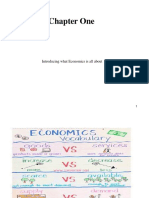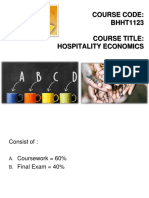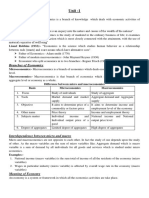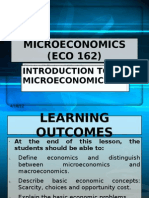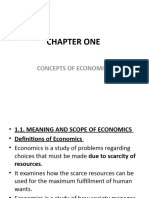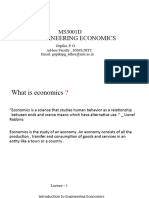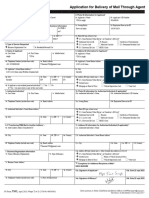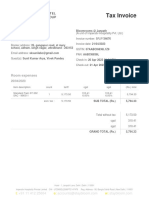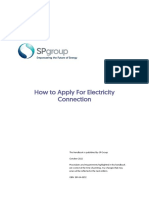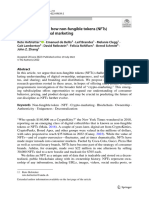0% found this document useful (0 votes)
15 views47 pagesChapter 1 Introduction
Chapter One introduces economics as the study of how societies utilize scarce resources to meet unlimited wants, distinguishing between microeconomics and macroeconomics. It covers basic economic concepts such as scarcity, choices, and opportunity cost, and introduces the Production Possibility Curve (PPC) as a tool to analyze these concepts. The chapter concludes with discussions on the factors influencing the PPC and the basic economic questions societies must answer regarding production.
Uploaded by
Abu SabilCopyright
© © All Rights Reserved
We take content rights seriously. If you suspect this is your content, claim it here.
Available Formats
Download as PDF, TXT or read online on Scribd
0% found this document useful (0 votes)
15 views47 pagesChapter 1 Introduction
Chapter One introduces economics as the study of how societies utilize scarce resources to meet unlimited wants, distinguishing between microeconomics and macroeconomics. It covers basic economic concepts such as scarcity, choices, and opportunity cost, and introduces the Production Possibility Curve (PPC) as a tool to analyze these concepts. The chapter concludes with discussions on the factors influencing the PPC and the basic economic questions societies must answer regarding production.
Uploaded by
Abu SabilCopyright
© © All Rights Reserved
We take content rights seriously. If you suspect this is your content, claim it here.
Available Formats
Download as PDF, TXT or read online on Scribd
/ 47


















